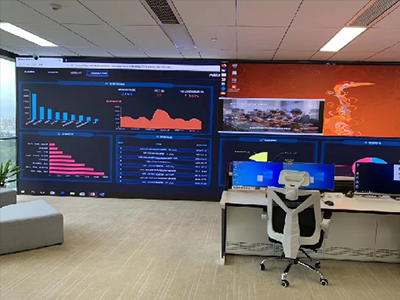ERP系统 & MES 生产管理系统
10万用户实施案例,ERP 系统实现微信、销售、库存、生产、财务、人资、办公等一体化管理
Mastering Excel Print Size Adjustment for All Printing Needs
In today’s digital age, where data presentation is crucial, mastering Excel’s print size adjustment capabilities is essential. Whether you’re preparing reports, presentations, or financial statements, ensuring your Excel sheets print correctly can save time and improve document clarity. This comprehensive guide dives into various methods to adjust print size in Excel, catering to diverse printing requirements effortlessly.
Understanding Excel’s Print Settings Excel Print Settings Explained
Excel offers robust print settings that allow precise control over how your spreadsheets appear on paper. To access these settings, navigate to the ‘File’ tab, select ‘Print’, and then click on ‘Page Setup’. Here, you can adjust margins, orientation, scaling, and more to tailor your printouts according to your needs.
Scaling Options in Excel Scaling Techniques for Different Print Sizes
Scaling is a powerful feature in Excel that adjusts the size of your spreadsheet to fit the desired number of pages or a specific paper size. You can scale your document both proportionally and non-proportionally, ensuring readability without compromising data integrity. Experiment with ‘Fit Sheet on One Page’ or custom scaling percentages to achieve optimal results.
Customizing Print Areas Defining Print Areas for Clarity
Defining print areas in Excel allows you to select specific parts of your worksheet for printing, ideal for focusing on critical data or charts. Simply highlight the cells you wish to print, navigate to ‘Page Layout’, and click on ‘Print Area’ followed by ‘Set Print Area’. This feature streamlines document preparation and enhances presentation quality.
Utilizing Page Breaks Optimizing Layout with Page Breaks
Page breaks control where Excel starts a new page when printing. By inserting manual page breaks or adjusting automatic ones, you can ensure that your document flows logically and maintains readability. Excel’s ‘Page Break Preview’ provides a visual representation, allowing intuitive adjustments for a polished final product.
Adjusting Margins and Orientation Enhancing Presentation with Margins and Orientation
Margins and orientation significantly impact how your Excel sheets appear in print. Widening margins can prevent data from getting cut off, while switching between portrait and landscape orientation adjusts the layout to suit different content types. These settings are accessible under ‘Page Layout’ > ‘Margins’ and ‘Orientation’.
Previewing and Proofing Ensuring Accuracy with Print Preview
Before finalizing your Excel printout, use the ‘Print Preview’ feature to inspect how your document will look on paper. This step allows you to catch formatting errors, adjust scaling if necessary, and ensure that all data is correctly aligned. It’s a crucial final check to maintain professionalism and clarity in your printed materials.
Closing Thoughts on Excel Print Size Adjustment
Mastering Excel’s print size adjustment capabilities empowers you to handle diverse printing needs with ease. By leveraging scaling options, custom print areas, page breaks, margins, orientation settings, and thorough proofing, you ensure that your Excel documents not only convey information effectively but also reflect a high standard of presentation. Incorporate these techniques into your workflow to streamline document preparation and elevate your professional output. Excel’s versatility in print customization truly makes it the ultimate tool for data-driven print projects.












 咨询顾问
咨询顾问